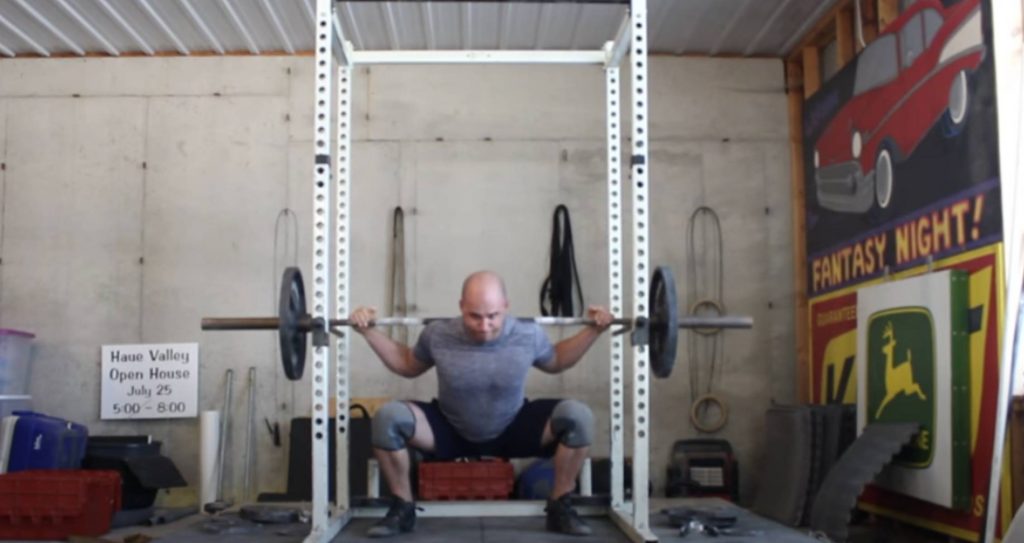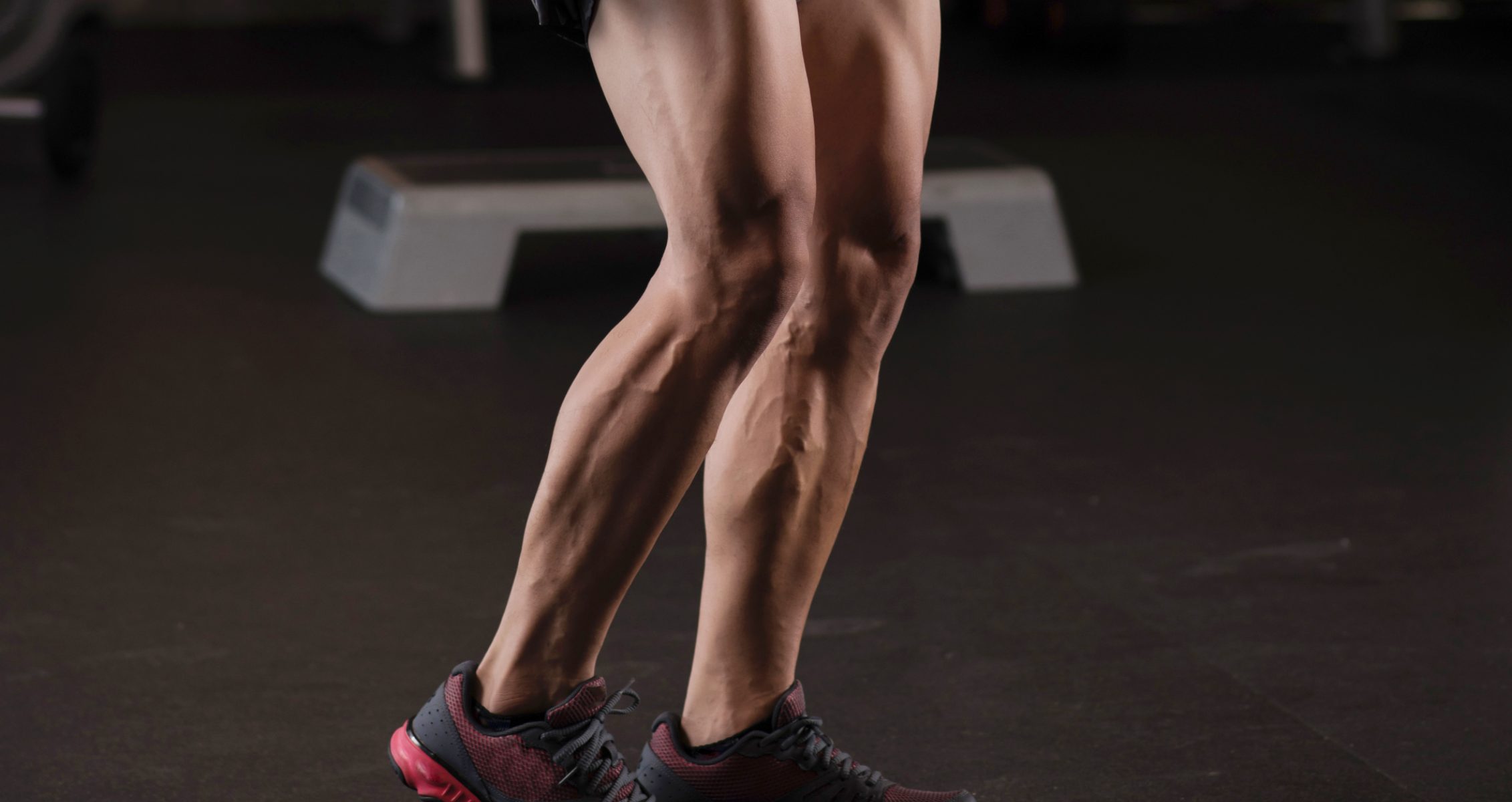Learn how to do the pin squat to grow your legs!
Leg day is the notorious day skipped in the gym. But if you’ve been lifting weights for a while now, you’ll know there are good reasons for not skimping on leg day. The legs host the largest muscle in your body (glutes) — stronger legs mean a more robust and massive body! One excellent movement for targeting your legs is the pin squat.
The pin squat is an excellent squat variation for improving your leg strength and power. This article will cover how to do them, why you should do them, and some alternative exercises.
Pin Squat Technique and Muscles Worked
The pin squat is a leg exercise that effectively targets the major muscles in your lower body — glutes, hamstrings, and quads. It’s a barbell squat performed with a pause in the middle of the movement. Instead of “bouncing” out of the hole of a squat, you’ll be forced to rest the barbell on safety pins before coming up – this brief pause has benefits the standard squat doesn’t that we’ll run through soon. For starters, doing this will improve your explosive strength and power output.
How to Do
- Set a barbell safety pin in place in a power rack — position the barbell so that when you squat, you form a 90-degree angle with your thighs.
- Grasp a barbell with a shoulder-width overhand grip, then squat down until the barbell rests on the safety pin.
- Explode through your heels to raise the barbell from the pin until you are in a standing position.
- Repeat.
Benefits
There are multiple reasons why performing squats from a pin can yield benefits that other squat variations don’t.
Concenctrc Strength
During a squat, the lift’s concentric portion (muscles shortening) is when you extend your legs. Since you’re performing the pin squat from a lowered position with a pause, this will improve your concentric strength.
Power
The pin squat forces you to explode from a lowered position with a heavy load on your back. This will improve your power output and translate to explosive movements like jumping and sprinting. In addition, this study found that implementing a pause during a squat — which is forced during the pin squat — improves your sports performance for concentric and eccentric movements, meaning sports that rely on running and jumping (1).
Improve Squat Depth and Mobility
Since the pin squat lets you stop the squatting movement before raising, it helps lifters who struggle with getting enough depth on their squat and increases your lower body mobility. And, of course, squat depth is essential to engage your lower body muscles fully.
Time Under Tension
The exercise will put your leg muscles under more time under tension since you have to pause in the middle of a squat. This can yield more muscle growth (2).
Helps With Knee Pain
This exercise can help you if you experience knee pain because you can control how low you set the safety pin. For example, if you’re experiencing knee pain, you can select the safety pin at a higher level, placing less pressure on your knees since you won’t have to squat down as far.
Stronger Legs
The pin squat will target all the major muscle groups in your legs to build more strength in your legs. And heavier weights will be more challenging than a standard squat since you have to pause.
Massive Lower Body
The stronger you get your legs, the more muscle mass you’ll accumulate in your lower body. Since the glutes are the biggest muscle in your body, any exercise that targets them will add mass to your frame and make you overall stronger.
Pin Squat Variations
Here are some alternatives to the pin squat that can yield similar benefits.
Partial Squats
As the name implies, the partial squat performs a squat from a partial squat position. Rather than squatting down to parallel or below, you’ll only squat down to a quarter-stance. This will place less strain on your knees and back and allow you to use heavier weights.
Box Squats
Like the pin squat, the box squat has you stop at a similar level on your squat, and you have to come out of it from a resting position. The difference is with the box squat, you’ll rest your glutes on the box, further activating your glute muscles.
Pause Squats
The pause squats have you pause at the bottom of a squat — similar to the starting position of the pin squat. This will increase your muscle’s time under tension and prevents you from bouncing out of the hole of the movement, meaning the raise up will be more rigorous than standard squats.
FAQs
Below are the most frequently asked questions (FAQs) to consider when programming pin squats.
What are pin squats good for?
Pin squats are good for strengthening your legs and improving your power. They also help you improve your mobility and increase the range of motion you can go down while squatting.
Are pin squats harder than squats?
Yes, this exercise will be more challenging than regular squats, so you won’t be able to use them as heavy of a weight. That’s because it has you squat weight out of a dead position, preventing you from “bouncing” to come out of the hole of a squat.
How high do you have to be for pin squats?
Generally, placing the safety pin in the power rack at a height that’ll put you in a squat position of about 90 degrees would be best. However, you have complete control of where you place the pin, and you can raise the safety pin to take the stress off your knees and improve your strength at different degrees of your squat.
More Exercise Guides
If you got value from the pin squat exercise guide, we recommend you check out some of our instructional guides for other movements below:
- Chest Supported T-Bar Row Exercise Guide: How to, Benefits, and Variations
- Plate Front Raise Exercise Guide: How to, Benefits, and Alternatives
Final Word
The pin squat is a squat that forces you to pause in a squat position and push the weight up from a dead-weight position with a barbell resting on a safety pin in a power rack. Of course, this will cause additional challenges that a standard squat won’t. But, overall, they’re an excellent exercise for strengthening your lower body, leg mobility, and power.
Follow us on Instagram, Facebook, and Twitter for more exercise guides!
References
- Martínez-Cava, A., Hernández-Belmonte, A., Courel-Ibáñez, J., Conesa-Ros, E., Morán-Navarro, R., & Pallarés, J. G. (2021). Effect of Pause Versus Rebound Techniques on Neuromuscular and Functional Performance After a Prolonged Velocity-Based Training. International journal of sports physiology and performance, 16(7), 927–933. https://doi.org/10.1123/ijspp.2020-0348
- Burd, N. A., Andrews, R. J., West, D. W., Little, J. P., Cochran, A. J., Hector, A. J., Cashaback, J. G., Gibala, M. J., Potvin, J. R., Baker, S. K., & Phillips, S. M. (2012). Muscle time under tension during resistance exercise stimulates differential muscle protein sub-fractional synthetic responses in men. The Journal of physiology, 590(2), 351–362. https://doi.org/10.1113/jphysiol.2011.221200









